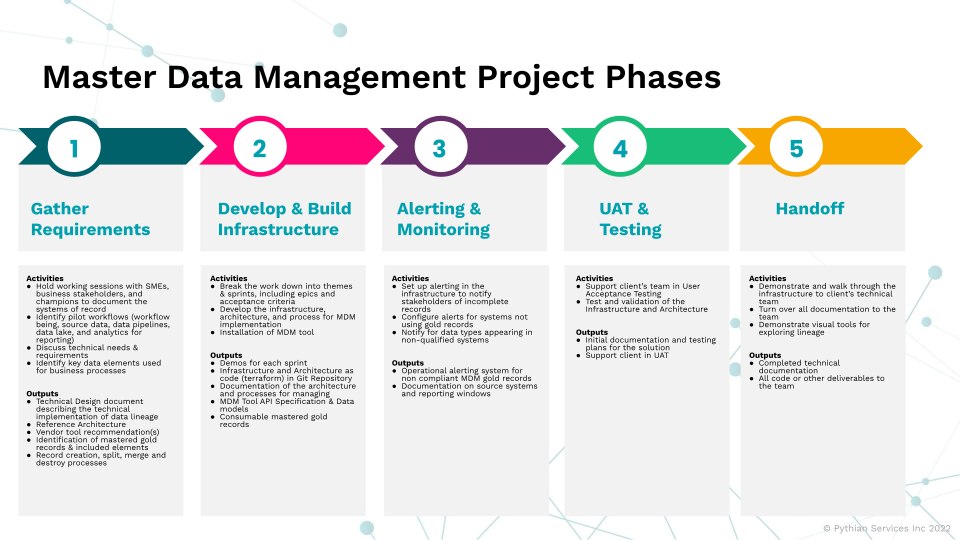Understanding the Scale of our Data Governance Program
Previously we discussed the role monetization plays in creating new revenue streams for organizations and the demands it places on our data governance programs to ensure legal obligations are met and produced data products are of high quality.
Early decisions when building your data governance organization about the scale of the team and the principles of operation are important to ensure alignment of priorities, work activities, and investments with your desired outcomes. The scale of a data governance program can manifest in the size of the organization responsible for the policies, technologies, and literacy that are being delivered. The program scale can also manifest in the process burdens placed on the organization to ensure compliance.
As we think about how to model our governance team, we must first review the key capabilities a data governance program provides:
-
Literacy – Data-driven organizations are successful because their team members are effective at using data to drive decisions. They also ensure strong communication about leveraging the tools and technology available to them. Data governance teams have an obligation to invest in data literacy to ensure teams are empowered to leverage data assets, create new assets and make effective decisions about data protection.
-
Policies & Standards – An organization’s ability to execute at high velocity is a function of how consistently teams execute the policies around decision-making and the uniformity in implementation patterns. Data governance teams drive speed and consistency by defining policies that are appropriate to the organization’s risk posture and supporting standards that ensure organizations can maximize their technology skills, eliminate duplicative work and ensure alignment on priorities and goals.
-
Risk Management – Data is an organizational asset, no different than a building or piece of industrial equipment. That data brings risk for loss, theft, or modification. Data governance teams can partner with cyber security teams to ensure the level of tooling, policy, and approvals built into processes are appropriate for the risk and threats the organization faces.
-
Technology Enablement & Core Services – This focus is the provisioning of core services, automation, and tools used by teams to be compliant with organizational policies and standards. Data governance teams have accountability for systems design, deployment, and enablement to ensure teams can successfully adopt the identified tooling.
Once we have our data governance objectives understood, we can begin to look at what characteristics will drive a data governance program to be a larger organizational size, thereby driving a larger organizational investment. With this evaluation we can also look at ways to minimize the burden on executing teams to ensure the organization’s risk does not go up while the velocity of innovation does not go down and our investment is maximized.
-
Data Governance Team Size – The size of a data governance team should be the minimum needed to effectively administer the four key responsibilities above, and no larger. The objective of a data governance team is not the strategy or research and development. It’s about execution. All members should be focused on ensuring their work accelerates that of the entire organization. Highly regulated organizations, like financial services and insurance, will inherently have larger data governance teams because of the complexity of the overlapping regulatory requirements they must meet.
-
Approvals Process – Organizations that ‘manage to exceptions’, that is they only require explicit approval for data decisions, usage, and deployment outside of policies and standards, providing an accelerated path for engineering teams to execute. Any time a team has to obtain approval from sister teams to execute, it introduces delay and needs for abnormal communication paths. When data literacy programs focus on providing context and enablement to all teams, approvals can be streamlined to focus on the exceptions, and the riskiest components of data consumption and keep teams moving quickly for the majority of their engineering activities.
-
Automation – Successful data governance teams employ automation extensively. They leverage data catalogs and tools for workload orchestration to automate processes used for data transformation, data validation, data retention, and capturing metadata necessary for compliance reporting. The use of automation by data governance teams shows a higher level of maturity in execution and allows for scalable delivery of products and customer engagement without significantly increasing the size of data governance teams. Automation can be used to ensure that deployments of new pipelines, new data products, and services meet policies and standards and properly route exceptions for review and approval in expedited timeframes.
Our objective when designing data governance programs should be ‘lightweight governance’ – enabling teams across an organization to execute with a high level of autonomy. Their success comes from having access to context about policies and standards, shared technology tools to enable them, and data literacy programs that are constantly elevating the capability of the entire organization.
As we continue our data governance series, next we will explore master data management and its role in providing high-quality data to systems and business processes uniformly across an organization. We will explore both the technology architecture component of MDM, as well as the supporting business process structures to manage data and make key decisions in context with business objectives.
Share this
You May Also Like
These Related Stories
Data Monetizations Impact on Data Governance


Data Monetizations Impact on Data Governance
Oct 14, 2022
4
min read
Data Governance in Legacy Environments


Data Governance in Legacy Environments
Oct 3, 2022
3
min read
Approaching Master Data Management


Approaching Master Data Management
Oct 27, 2022
3
min read
No Comments Yet
Let us know what you think